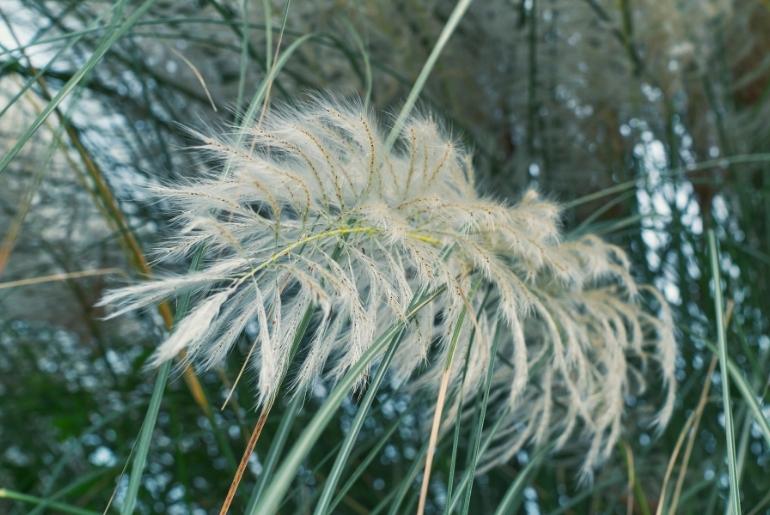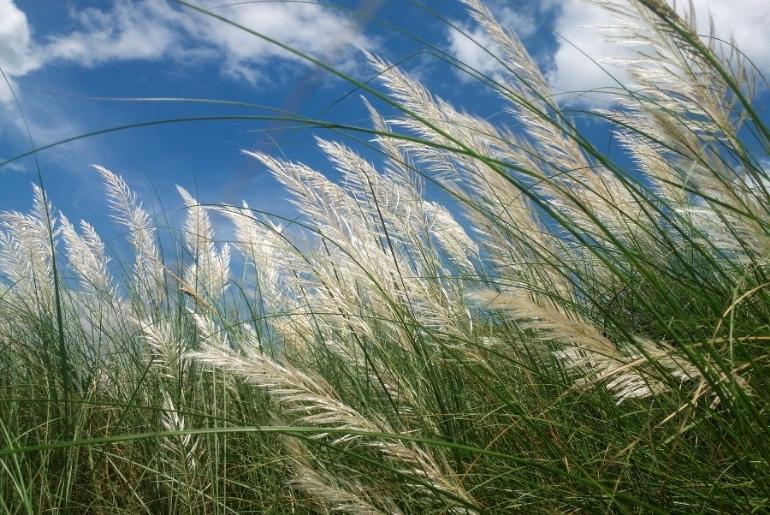Every year, a captivating festival that signals the arrival of romance, hope, and a hint of magic takes place in the centre of India. As the monsoon rains quench the earth’s thirst, a humble yet enchanting grass known as “Kans” or “Kashphul” springs to life, its feathery plumes swaying in rhythm with the season’s romantic dance. But this is not just any grass—rather, it is a sign of divine presence. It beckons Goddess Durga from her heavenly abode to grace the earthly realm with her presence. The tales of this perfect union between the clouds and the kashful are woven into the fabric of a festival known as Durga Puja.
What Is The Significance Of Kashful During Durga Puja?

Kans grass is a tall, wild grass that grows in various parts of India. Its feathery and graceful plumes are often used in various cultural and religious activities, especially during the Durga Puja festival. Durga Puja is one of the most important and widely celebrated festivals in India, particularly in the state of West Bengal. It marks the worship of Goddess Durga, who is believed to visit Earth during this time, bringing hope, prosperity, and good fortune to her devotees.
The kashful, with its soft plumes and association with the rainy season, is seen as a symbol of the arrival of Goddess Durga. It is used in the decoration of Durga idols, pandals, and various artistic installations. The vibrance of the kashful is associated with the rejuvenation of nature after the monsoon rains, and it signifies the arrival of the goddess during this festive season.
Also Read: Overlooking Magical Views Of Western Ghats, THIS Chikmagalur Resort Sparks Luxury All Around
During Durga Puja, artisans and decorators use Kans grass to create intricate designs and decorations, especially for the backdrop of the Durga idol. These designs often depict themes related to the goddess and her mythology. It involves elaborate processions, traditional dances, music, cultural programs, and various rituals. People from all walks of life come together to celebrate the festival with great joy.
The use of Kans grass adds a unique and colourful dimension to the festivities, creating a connection between nature, mythology, and culture. The festival is a time of togetherness, joy, and a celebration of the goddess’s visit to Earth, filling hearts with hope, romance, and magic, as you mentioned.
Where Is This Grass Found?

Kashful is a common wild grass found in various parts of India, particularly in regions with a tropical or sub-tropical climate. It often thrives in marshy areas and along the banks of rivers. While it’s not typically cultivated, it can be found in the following regions:
West Bengal: Kans grass is widely found in West Bengal, especially in rural areas and along riverbanks. It plays a significant role in the Durga Puja celebrations in this state.
Assam: In Assam, Kans grass can be found in various regions, and it’s used in traditional cultural practices and decorations during festivals.
Tripura: Tripura, another state with a significant Bengali population, also has Kans grass growing in various areas. It is used in cultural and religious activities, particularly during Durga Puja.
Kashful holds cultural and religious significance, especially during festivals like Durga Puja in West Bengal and other Bengali-influenced regions.
Cover Image Courtesy: Canva
For more such snackable content, interesting discoveries and the latest updates on food, travel and experiences in your city, download the Curly Tales App. Download HERE.
Good news! We are on WhatsApp! Subscribe to Curly Tales WhatsApp Channel to stay up-to-date with exclusive content and BTS. Join HERE.
First Published: October 23, 2023 4:15 PM



